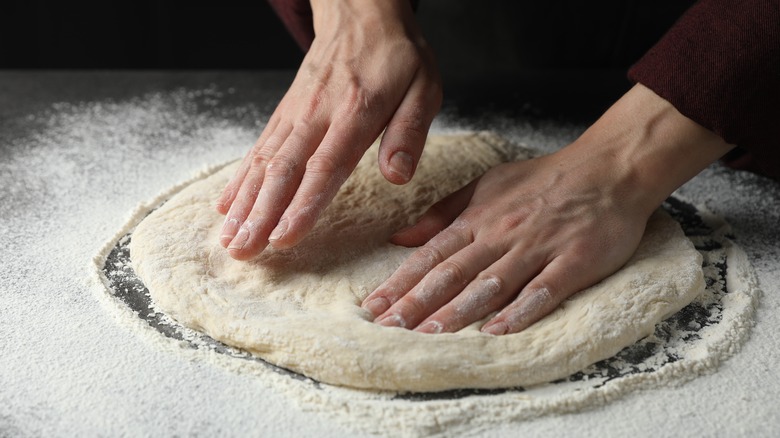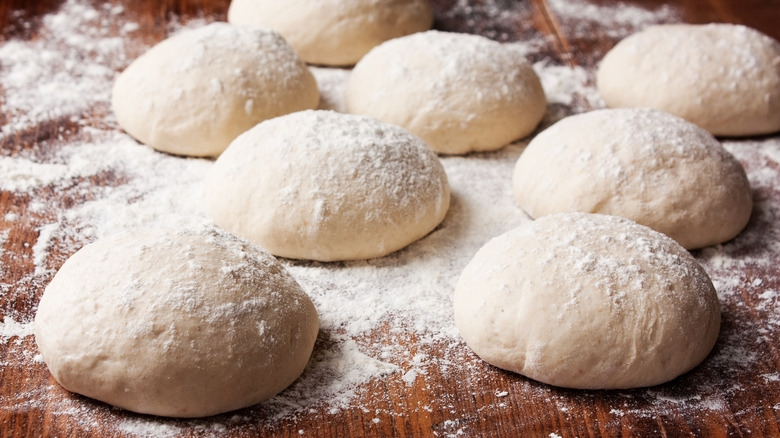The Tell-Tale Sign Your Pizza Dough Is Ready To Stretch
Stretching your pizza dough at the correct time is one of the biggest contributors to the perfect pizza crust once baked: light, bubbly, and crispy on the outside, and soft in the center. The ingredients and method of making the dough are one beast, but proofing and shaping the dough are another. So how do you know when your dough has rested long enough and is ready to be stretched? Andrea Congiusta, the Executive Chef at Pasta Beach, says that when your rested ball of dough is soft and there's no resistance at the center, it's go-time.
Kneading your dough appropriately is essential to develop the gluten needed to give your dough the strength to rise and hold its shape when baked. But immediately after kneading, the gluten in the dough is tight from being worked, so the dough is very elastic; when you poke it, it will spring back up quickly. "The gluten in the dough needs to relax before it gets stretched, as this helps it not to break," Congiusta says. Proofing the dough sufficiently lets the gluten relax so that it will stretch easily into your desired pizza shape without tearing.
Using the poke test to check for resistance and tips for stretching dough
How you proof your dough is up to you and the recipe you choose to follow — you can cold-proof it in the fridge for days or quick-proof it in a warm spot for a few hours. You can use the poke test to determine when your dough is done proofing. Poke your ball of dough in the center with your finger. If the indent springs back up quickly, the dough needs to proof for longer. When the indent holds and only springs back up slowly and halfway, that means the dough is ready to be stretched and baked. If the indent stays and doesn't rise back up at all, you may have over-proofed pizza dough on your hands.
If you use the poke test, start to stretch your dough, and when you feel it becoming resistant a few minutes into shaping, cover it with a clean kitchen towel and allow it to rest again for 10-15 minutes, then continue shaping. To help make it even easier to shape, make sure to bring your dough to room temperature if it was in the fridge, coat your hands and work surface with a thin layer of olive oil, and press the dough flat from the center outward before you begin to stretch it.

